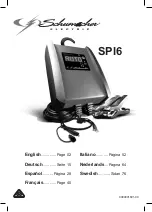
Data memory
General information
Electronic control devices are installed in the
vehicle. Electronic control units process data
they receive from vehicle sensors, self-gener-
ate or exchange with each other. Some con-
trol units are necessary for the vehicle to func-
tion safely or provide assistance during driving,
for instance driver assistance systems. Fur-
thermore, control units facilitate comfort or in-
fotainment functions.
Information about stored or exchanged data
can be requested from the manufacturer of the
vehicle, in a separate booklet, for example.
Personal reference
Each vehicle is marked with a unique vehicle
identification number. Depending on the coun-
try, the vehicle owner can be identified with the
vehicle identification number, license plate and
corresponding authorities. In addition, there
are other options to track data collected in the
vehicle to the driver or vehicle owner, such as
via the ConnectedDrive account that is used.
Operating data in the vehicle
Control units process data to operate the vehi-
cle.
For example, this includes:
▷
Status messages for the vehicle and its
individual components, e.g., wheel RPM,
wheel speed, deceleration, lateral accelera-
tion, engaged seat belt indicator.
▷
Ambient conditions, e.g., temperature, rain
sensor signals.
The processed data is only processed in the
vehicle itself and is generally volatile. The data
is not stored beyond the operating period.
Electronic components, e.g. control units and
vehicle keys, contain components for storing
technical information. Information about the
vehicle condition, component usage, mainte-
nance recommendations, events or faults can
be stored temporarily or permanently.
This information generally documents the
state of a component, a module, a system, or
the surrounding area, for instance:
▷
Operating states of system components,
such as fill levels, tire pressure, battery sta-
tus.
▷
Malfunctions and faults in important sys-
tem components, for instance lights and
brakes.
▷
Responses by the vehicle to special driving
situations such as airbag deployment or
engagement of the driving stability control
systems.
▷
Information on vehicle-damaging events.
The data is required to perform the control unit
functions. Furthermore, it also serves to detect
and correct malfunctions, and helps the vehicle
manufacturer to optimize vehicle functions.
The majority of this data is stored temporarily
and is only processed within the vehicle itself.
In some circumstances the vehicle may store
some data for an additional but limited period
of time.
When servicing, for instance during repairs,
service processes, warranty cases, and quality
assurance measures, this technical informa-
tion can be read out from the vehicle together
with the vehicle identification number.
An authorized service center or another quali-
fied service center or repair shop can read
out the information. The diagnostic socket re-
quired by law in the vehicle is used to read out
data.
The data is collected, processed, and used
by the relevant organizations in the service
network. The data documents technical condi-
tions of the vehicle, which can be used to de-
termine vehicle maintenance status, and facili-
tate quality improvement.
Fault and event memories in the vehicle can
be reset when an authorized service center or
Seite 11
Information
NOTES
11
Online Edition for Part no. 01405A604A9 - VI/22
Summary of Contents for X5 xDrive45e PLUG-IN HYBRID 2022
Page 1: ...OWNER S MANUAL BMW X5 PLUG IN HYBRID Content A Z Online Edition for Part no 01405A604A9 VI 22 ...
Page 2: ......
Page 33: ...On the road QUICK REFERENCE 33 Online Edition for Part no 01405A604A9 VI 22 ...
Page 329: ...Cargo area CONTROLS 329 Online Edition for Part no 01405A604A9 VI 22 ...
Page 345: ...Saving fuel DRIVING TIPS 345 Online Edition for Part no 01405A604A9 VI 22 ...
Page 421: ...Appendix REFERENCE 421 Online Edition for Part no 01405A604A9 VI 22 ...
Page 440: ... BL5A604A9002 01405A604A9 ue Online Edition for Part no 01405A604A9 VI 22 ...
Page 441: ......
Page 442: ......












































